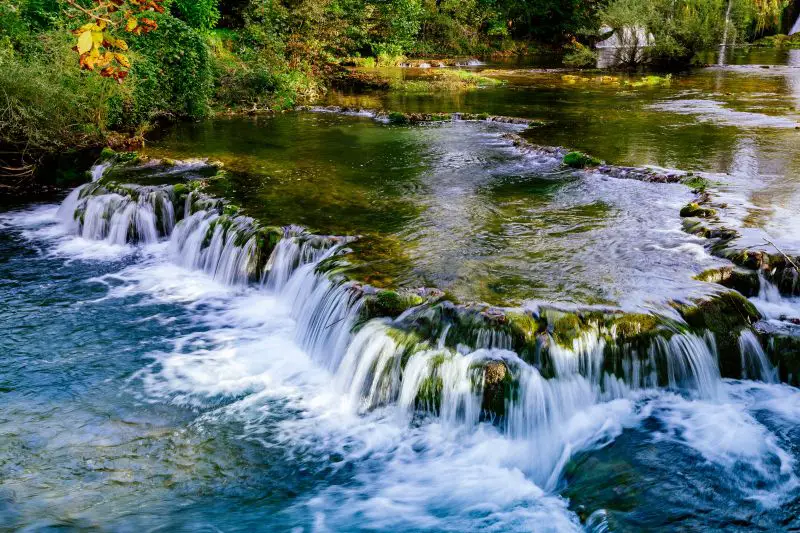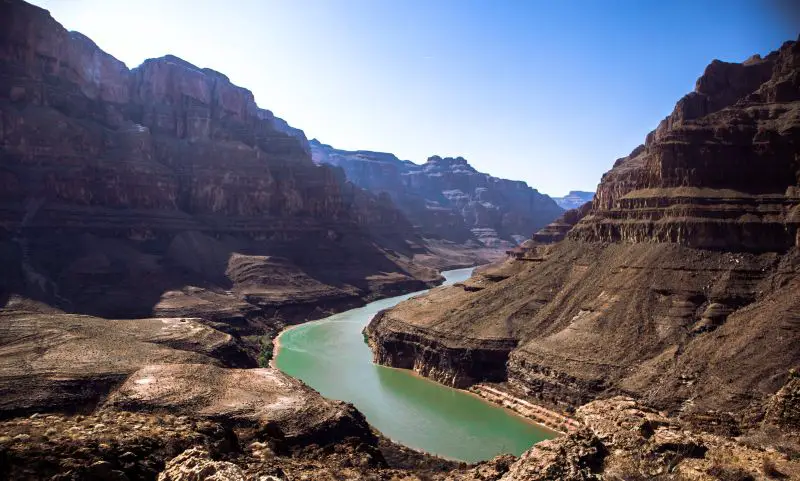Click here to get this post in PDF
This article contains affiliate links. For more info, see disclosure.
The allure of a shimmering stream, the thunderous roar of a waterfall, or the calming tranquility of a serene pond, all have one thing in common – water. This elemental life force is fundamental for our survival, and the right to its use, known as ‘water rights’, is a critical aspect of global policy and legal frameworks. Water rights are a subject of fervent discussion and the catalyst for numerous environmental and socio-economic challenges.
A Deep Dive Into Water Rights
This article will dive deep into the meaning and significance of what are water rights.
Water rights can be succinctly described as the legal rights to use water from a water source, such as a river, stream, pond or underground source. The terms of such rights typically involve consumption, irrigation, recreation, or the generation of hydroelectric power. The intricate mosaic of water rights includes provisions for both the practical aspects of water use and its preservation.
Understanding the nuances of water rights entails unraveling a web of regulations and agreements between individuals, corporations, and governments. It demands awareness of local customs, international treaties, and environmental conservation measures. These rights are governed by a variety of doctrines, varying significantly between and within countries.
Deciphering the Types of Water Rights
In broad strokes, water rights can be divided into two overarching categories, riparian and prior appropriation.
Riparian Rights: Stemming from English common law, riparian rights refer to the rights of landowners whose properties abut a water body to make reasonable use of it. The caveat is that they must not interfere with the similar rights of other such landowners. In essence, riparian rights allocate water among those who own land along its path.
Prior Appropriation: A doctrine primarily used in the western United States, it is colloquially known as “first in time, first in right”. Prior appropriation grants rights to the first user of a water source, regardless of the proximity of their land to the source. The user must put the water to beneficial use, a concept that usually refers to irrigation but can encompass industrial, municipal, and other uses.
These doctrines only scratch the surface of the global water rights landscape, with the reality often being a complex hybrid of various historical, legal, and social factors.
The Global Waterscape of Water Rights
The scope of water rights is truly global, underpinned by an array of national policies and international conventions. For instance, in India, the state owns most water resources, but farmers have rights to groundwater on their land. Australia, grappling with chronic water shortages, has developed a market-based system of water rights, allowing for the trading of water entitlements.
On an international level, transboundary water bodies (shared by two or more countries) are governed by agreements such as the United Nations Convention on the Law of Non-Navigational Uses of International Watercourses. This agreement establishes the principles of equitable and reasonable use, obligation not to cause significant harm, and the necessity of cooperation between nations.
Water Rights: An Environmental Perspective
Environmental considerations play an increasingly important role in discussions on water rights. Ensuring sufficient water flow for ecological sustainability has led to the emergence of ‘environmental flows’ and the concept of ‘water for the environment’. This includes maintaining in-stream flows for fish and wildlife habitats, water quality, and scenic or recreational values.
Moreover, the recognition of ‘rights of nature’, including rights of rivers and other ecosystems to exist, flourish, and naturally evolve, is a growing movement in environmental law. This can be seen in instances where rivers, such as New Zealand’s Whanganui and India’s Ganges and Yamuna, have been granted legal personhood.
Delving into Legal and Ethical Dimensions of Water Rights
As we venture deeper into the world of water rights, it’s crucial to touch on the legal and ethical dimensions that lie beneath the surface. Water law plays an integral role in mediating disputes over water, protecting water resources, and ensuring equitable access to water. Legal frameworks like the United States’ Clean Water Act, European Water Framework Directive, and South Africa’s National Water Act are prime examples of this regulatory role.
In the same stream of thought, ethical considerations frequently bubble to the surface in the water rights discourse. Water ethics delve into questions about who should have access to water, how it should be used, who decides these matters, and what measures are in place to safeguard the water for future generations. This ethical lens is pivotal in promoting water justice and sustainability, given the urgent need to address water scarcity and pollution.
The Impact of Water Rights on Indigenous Communities
An often overlooked, yet crucial facet of water rights, is its impact on indigenous communities. Indigenous peoples have historically had a close relationship with water, using it not only for physical sustenance but also as a central element in their spiritual and cultural practices. Yet, these communities often grapple with legal and policy challenges to their water rights.
For instance, in many parts of the world, the right to water for indigenous peoples is acknowledged, but not necessarily protected. These communities often have to negotiate complex legal terrains to assert their rights, grappling with conflicts between traditional customs and modern legal systems. Recent developments, such as the United Nations Declaration on the Rights of Indigenous Peoples, underscore the international commitment to address these issues.
Case Study: The Colorado River in the United States
To bring the abstract concept of water rights into sharper focus, let’s look at the Colorado River in the United States as a case study. This mighty river is governed by a complex web of laws, compacts, court decrees, and administrative policies collectively known as the ‘Law of the River’. Here, both the doctrines of riparian rights and prior appropriation come into play.
The Colorado River Compact, signed in 1922, divides the river basin into the Upper Basin (Wyoming, Colorado, Utah, and New Mexico) and the Lower Basin (California, Arizona, and Nevada), allocating water between them. This case illustrates how water rights play out in reality, with stakeholders ranging from farmers and cities to indigenous tribes and environmental groups.
The Intersection of Water Rights and Climate Change
As the world grapples with the growing impacts of climate change, water rights are set to take center stage. With shifts in precipitation patterns, increasing temperatures, and rising sea levels, the availability and quality of water resources are under threat. This change has profound implications for water rights, necessitating adaptability and resilience in how these rights are allocated and managed.
A future-focused perspective on water rights must also consider climate justice. As climate change exacerbates water stress, the most vulnerable communities often bear the brunt of the impacts. Achieving equitable access to water under changing climate conditions requires robust legal protections and targeted policy interventions.
The Human Right to Water
In 2010, the United Nations General Assembly recognized the human right to water and sanitation, asserting that clean drinking water and sanitation are essential for the realization of all human rights. This landmark resolution brought the focus back to the individual, emphasizing that water rights are not merely about regulating use but also about ensuring every person’s access to safe, sufficient, and affordable water.
This global recognition of water as a human right symbolizes a paradigm shift in the water rights discourse, from a resource-centered approach to a human-centered one. It underscores the need for states and international bodies to prioritize the provision of water to all individuals, particularly those living in marginalized and underserved communities.
Conclusion: Charting the Course of Water Rights
Navigating the complexities of water rights is akin to sailing through a river with numerous tributaries. It’s a journey filled with legal intricacies, societal implications, environmental considerations, and ethical dilemmas. From indigenous rights and climate change to the human right to water, the scope of water rights is vast and continually evolving.
This exploration into water rights reveals how this precious resource, so often taken for granted, lies at the heart of many of the world’s most pressing issues. Through understanding water rights, we gain a deeper appreciation of the intricate balance between consumption and conservation, the individual and the community, the present and the future.
As the dialogue on water rights continues to flow, it’s clear that the road ahead is uncharted. But equipped with knowledge, guided by ethics, and spurred by the universal need for this vital resource, we are prepared to navigate the waters ahead, charting the course towards a future of equitable and sustainable water use.
You may also like:
Oxyle raises $16m to lead the fight against the “forever chemicals” contaminating our water
Individual Measures That Can Be Taken To Prevent Water Pollution
Image source: elements.envato.com


